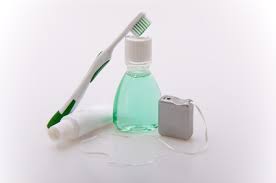Taking Good Care of Your Mouth Guard
There is more than one type of mouth guard available to patients to help protect your teeth and jaw. You may have one or more of these, and it is very important to take care of them so you not only get the best out of your mouth guard, but also don’t end up having to pay for a new one.
Types of Mouth Guards
The three most common types of mouth guards are easy to come by. They can be found in a store or made by your dental professional, depending on what kind you need and the quality your dentist recommends.
Sports Mouth Guard
Anyone who participates in any type of physical activity should wear a sports mouth guard to protect their teeth. Common sports such as football, hockey, soccer and basketball sometimes even require players to wear them. It is also smart to wear a sports mouth guard when biking or playing any kind of competitive sport, even just with friends, as you can be hit in the mouth or fall on your face in a matter of seconds. Without a sports mouth guard, your teeth can be chipped, damaged or even broken off, resulting in fillings, crowns or even extractions and implants, all which can be costly and require multiple trips to your dentist.
Sports mouth guards are cheap, and can be found in nearly any sporting store or pharmacy. They require you to heat them in boiling water and then, once soft enough, have you or your child bite into the material so it can form the guard around the teeth it is to protect. Once it hardens, the sports mouth guard is removed and left to cool; it must be fully cooled before it is used during play.
Occlusal Splint Mouth Guard
An occlusal splint – also called a night guard or a bite guard – is a type of mouth guard that is worn while you are asleep to protect your teeth and dental restorations from the damage caused when you grind your teeth in your sleep.
When a patient grinds their teeth, they are causing damage to their teeth and any dental restorative in their mouth. The pressure can lead to broken teeth, damaged restorations, daily headaches and even jaw disorders.
NTI (Nociception Trigeminal Inhibitor)
A different type of mouth guard, an NTI is worn only on your front teeth. The guard can be made to fit over your top or bottom front teeth, and is used to help prevent patients from nighttime bruxism (grinding) to in turn prevent migraines and headaches.
It’s Easy to Take Care of Your Mouth Guard
Use Your Case
No matter what type of mouth guard you have or where you get it from, it should always come with a ventilated carrying case. The case is to protect and store your mouth guard while you are not wearing it, and the ventilation is to help prevent bacteria from growing in the case. Dental offices provide these when they make professional mouth guards for patients. If you are not provided one, be sure to ask for a case. If you are considering buying a mouth guard in a store and it does not come with a case, consider purchasing a brand that includes a carrying case. Whenever you are not wearing your mouth guard, it should be in the carrying case.
You should also clean your case regularly to avoid any bacteria building up inside of it, which can transfer to your mouth guard when you store it.
Wash the Mouth Guard Thoroughly
Keeping your mouth guard clean is imperative, as bacteria, yeast and even mold can fester on the guard, even overnight. Unclean mouth guards are a dangerous health risk, and can cause diseases, illnesses and even worsen disorders already present in your body, such as asthma.
To clean your mouth guard, make sure you wash it the same way you brush your teeth: put some toothpaste on your toothbrush and gently scrub all surfaces. This ensures all debris is removed. Next, rinse it with lukewarm, soapy water and let it air dry in your ventilated case. Always make sure your case is clean, too!
Keep Your Mouth Guard In a Safe Location
Sometimes mouth guards have to be replaced. Sometimes a patient might get dental work done, such as crowns, implants or large fillings, that change the size and shape of their teeth slightly, which can make your mouth guard not fit. However, the most common reason patients need to purchase a new mouth guard is because it was damaged or lost due to not keeping proper track of it.
Common Ways People Have Damaged or Lost Their Mouth Guards
- the family dog ate it
- it was thrown out with the garbage
- it was left in a pocket and was run through the wash
- the plastic material was chewed through
- it was in a purse that was stolen
What To Do If My Mouth Guard is Lost or Damaged
Regardless of if you lose your mouth guard or just need it replaced, the staff at Affiliated Dentists can happily make you a new one. All you have to do is come in for an appointment in which we take impressions of your teeth, and you should have a new mouth guard a day to a week later depending on the style.

